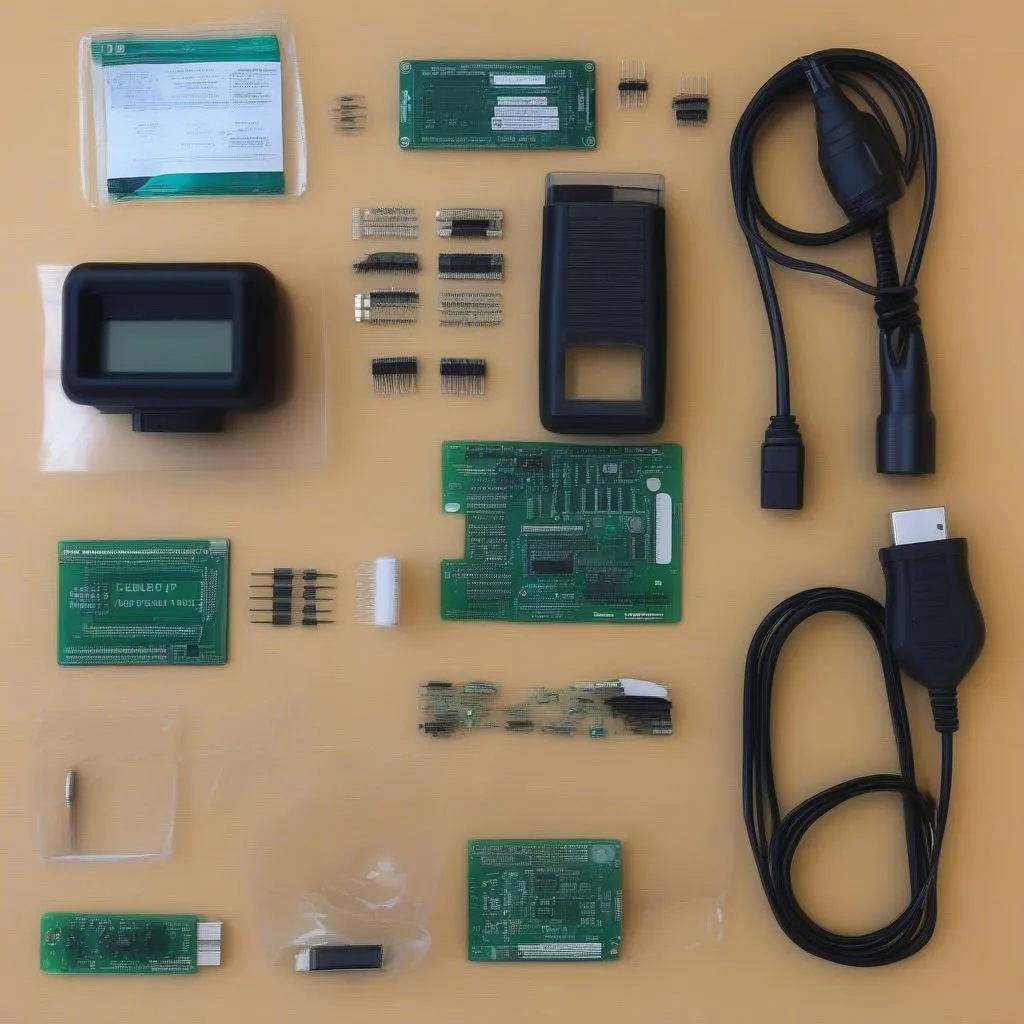Have you ever been stuck on the side of the road, wondering what’s wrong with your car? Or maybe you’re a DIY enthusiast who loves tinkering with your vehicle. In either case, you’ve probably thought about the benefits of having an OBD2 scan tool. These handy devices can help you diagnose and fix car problems, potentially saving you time and money. But what if you could make your own OBD2 scan tool?
The Importance of OBD2 Scan Tools
Imagine you’re driving down a busy highway when your car suddenly starts jerking. You pull over to the side of the road, worried and frustrated. You open the hood, but nothing looks out of place. Then you remember – you have an OBD2 scan tool! Plugging it into your car’s diagnostic port, you get a code reading for a faulty oxygen sensor. Knowing this, you can confidently order the part you need and get back on the road.
OBD2 scan tools are essential for any car owner, whether you’re a seasoned mechanic or just starting out. Here’s why:
- Diagnose Car Problems: OBD2 scan tools read diagnostic codes from your car’s computer, which can help identify the root cause of many issues.
- Save Money: By diagnosing problems early, you can avoid costly repairs and potentially prevent further damage.
- Boost DIY Confidence: Having an OBD2 scan tool empowers you to tackle simple repairs on your own, saving you time and money.
Making Your Own OBD2 Scan Tool: A Practical Guide
So, you’re ready to take your car’s diagnostics into your own hands? Here’s a step-by-step guide to building your own OBD2 scan tool:
What You Need:
- Microcontroller: You’ll need a microcontroller to process the data from your car’s OBD2 port. Popular choices include Arduino, Raspberry Pi Pico, and STM32.
- OBD2 Interface: This is the hardware that allows your microcontroller to communicate with your car’s OBD2 port. You can find affordable OBD2 interfaces on websites like Amazon and eBay.
- Programming Language: You’ll need a programming language to write the code for your scan tool. Popular choices include Python, C++, and Arduino IDE.
- Display: While not essential, a display like an LCD or OLED screen can make your tool more user-friendly.
- Optional: Case: To protect your tool from damage and give it a polished look, you can build or purchase a case.
Step-by-Step Instructions:
- Select Your Microcontroller: Choose a microcontroller that meets your needs and skill level.
- Connect the OBD2 Interface: Connect the OBD2 interface to your microcontroller. This process will involve soldering or using a connector.
- Write Your Code: Use your chosen programming language to write the code for your scan tool. This code will handle communication with the OBD2 interface, data processing, and displaying the results. There are plenty of open-source libraries and resources available online to help you with this step.
- Test and Debug: Once you’ve written your code, test it on a vehicle. This will involve connecting your tool to the OBD2 port and checking that it’s reading data correctly.
- Build a Case: If desired, build or purchase a case to protect your tool.
Common Questions
Q: What are the benefits of building my own OBD2 scan tool?
A: You get to learn new skills, create a tool tailored to your specific needs, and potentially save money.
Q: What is the hardest part of building an OBD2 scan tool?
A: The hardest part can be writing the code for the microcontroller, especially if you’re new to programming.
Q: Where can I learn more about building an OBD2 scan tool?
A: Many online forums and communities offer detailed guides and support. You can also find tutorials on YouTube. [Link to Youtube tutorials about making OBD2 scan tools]
Q: Can I use a smartphone to make my own OBD2 scan tool?
A: Yes, there are apps available that can turn your smartphone into an OBD2 scanner with the right hardware.
Q: What are some popular car brands that have OBD2 ports?
A: Almost every car manufacturer since 1996 has incorporated OBD2 ports, including popular brands like Toyota, Ford, Honda, and BMW.
Q: How can I find out if my car has an OBD2 port?
A: The OBD2 port is typically located under the dashboard, near the steering column. It’s a 16-pin connector with a specific shape.
Q: What is the difference between an OBD2 scan tool and an ELM327 adapter?
A: An ELM327 adapter is a type of OBD2 interface that can be used with a microcontroller or smartphone. It’s a common component used in building DIY OBD2 scan tools.
Conclusion:
Making your own OBD2 scan tool can be a rewarding experience, giving you a deeper understanding of your car’s inner workings. While it requires some technical knowledge and effort, the benefits are significant. Remember to prioritize safety and follow all instructions carefully. If you need any assistance, don’t hesitate to contact us at +84767531508.
 obd2 scan tool parts
obd2 scan tool parts
 obd2 scan tool in action
obd2 scan tool in action
Let us know your thoughts in the comments below! And if you’re looking for even more information, check out our other articles on [Link to “Best BMW Scanner Tool”] or [Link to “What Are ABS on Scan Tools”].


